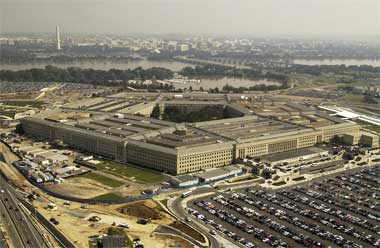A Senate Armed Services Committee investigation discovered counterfeit electronic parts from China in the Air Force’s largest cargo plane, in assemblies intended for Special Operations helicopters, and in a Navy surveillance plane among 1,800 cases of bogus parts, a committee report released today shows.
The year-long investigation launched by Sen. Carl Levin, D-Mich., the committee’s chairman,and Ranking Member Sen. John McCain, R-Ariz., found a total number of suspect counterfeit parts involved in those 1,800 cases exceeding 1 million.
“Our report outlines how this flood of counterfeit parts, overwhelmingly from China, threatens national security, the safety of our troops and American jobs,” Levin said. “It underscores China’s failure to police the blatant market in counterfeit parts – a failure China should rectify.”
“Our committee’s report makes it abundantly clear that vulnerabilities throughout the defense supply chain allow counterfeit electronic parts to infiltrate critical U.S. military systems, risking our security and the lives of the men and women who protect it,” said McCain. “As directed by last year’s Defense Authorization bill, the Department of Defense and its contractors must attack this problem more aggressively, particularly since counterfeiters are becoming better at shielding their dangerous fakes from detection.”
The investigation’s findings point to China as the dominant source of counterfeit electronic parts and the Committee concluded that the Chinese government has failed to take steps to stop counterfeiting operations that are carried out openly in that country. The Chinese government denied visas to Committee staff to travel to mainland China as part of the Committee’s investigation.
The Committee’s report includes detailed descriptions of how counterfeits are flooding thesupply chain, risking the performance and reliability of critical defense systems. In just one example described in the report, the U.S. Air Force says that a single electronic parts supplier,Hong Dark Electronic Trade of Shenzhen, China, supplied approximately 84,000 suspect counterfeit electronic parts into the DOD supply chain. Parts from Hong Dark made it into Traffic Alert and Collision Avoidance Systems (TCAS) intended for the C-5AMP, C-12, and the Global Hawk.
In addition, parts from Hong Dark made it into assemblies intended for the P-3,the Special Operations Force A/MH-6M, and other military equipment, like the Excalibur (an extended range artillery projectile), the Navy Integrated Submarine Imaging System, and the Army Stryker Mobile Gun.
While the investigation focused on the risk that counterfeit parts pose to U.S. national security and the safety of military personnel, the rampant theft of U.S. intellectual property also severely impacts the U.S. economic security. According to the Semiconductor Industry Association(SIA), counterfeits cost U.S. semiconductor companies more than $7.5 billion annually in lost revenue, a figure SIA says results in the loss of nearly 11,000 American jobs.
In November 2012, the Committee held a hearing on the investigation’s preliminary findings.Following that hearing, Committee Chairman Carl Levin and Ranking Member John McCain offered an amendment to the FY 2012 National Defense Authorization Act to address weaknesses in the defense supply chain and to promote the adoption of aggressive counterfeit avoidance practices by DOD and the defense industry. The amendment was adopted in the Senate and a revised version was included in the final bill signed by President Barack Obama on December 31, 2011.
[Download not found]










